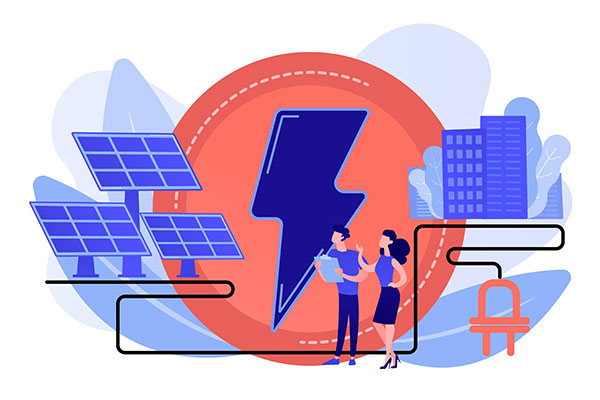
Solar energy is rapidly becoming a staple in everyday life. With technological advances and a concerted push towards a carbon-free electric grid, solar energy is set to play a pivotal role in our energy future.

The Solar Futures Study by the U.S. Department of Energy predicts that solar energy will play a big role in our energy future. By 2035, it could provide 40% of our electricity, and by 2050, that number might increase to 45%.
To make this happen, we’ll need a lot more solar power – possibly as much as 3,200 GW. Despite facing challenges like supply chain issues and changing policies, the solar industry is on the verge of rapid growth.
One reason for this is the Inflation Reduction Act of 2022, which set aside a whopping $369 billion for climate and energy initiatives.
Technological advancements are driving down costs and making solar energy more accessible. Electricity prices are projected to remain stable through 2035 despite significant decarbonization, thanks to technological improvements and enhanced demand flexibility.

California’s recent Net Energy Metering (NEM) policy changes may have reduced incentives for solar production, yet it remains a bellwether for the industry’s adaptability and resilience.
Despite potential short-term declines, the long-term trajectory for solar adoption continues to be one of growth and innovation.
The solar industry’s growth is expected to create between 5,00,000 to 1.5 million jobs by 2035. This expansion reflects the scalability of clean technology industries and the potential for substantial employment benefits.
With the large-scale electrification of various sectors, solar energy will contribute to a significant reduction of carbon dioxide emissions, aiding in the decarbonization of the U.S. energy system by 2050.
Questions about land use, raw material availability, and waste generation are addressed with the understanding that land availability doesn’t constrain solar deployment, and that circular economy strategies can mitigate the impact of materials used in solar technologies.

A significant acceleration of clean energy deployment is necessary to realize the Solar Futures vision. This includes quadrupling the annual solar deployment rate by the end of the decade and sustaining similar growth rates in the 2030s and beyond.
This landmark legislation is expected to drastically alter the solar industry’s future by incentivizing clean energy deployment and manufacturing, potentially creating hundreds of thousands of new jobs and heralding a new era of American energy leadership.
The solar industry’s growth has been hampered by supply chain issues, yet there’s optimism as these challenges begin to ease, setting the stage for an uptick in solar installations as costs decrease and production ramps up.

The Uyghur Forced Labor Prevention Act (UFLPA) has created hurdles in solar component imports, but recent clearances signal potential easing, even as the industry works to prove the ethical provenance of their supply chains.
The future of solar energy is bright, with its integration into our daily lives becoming more pronounced. From policy impacts to technological advancements and supply chain optimizations, the solar industry is gearing up for an era of unprecedented growth and widespread adoption.
